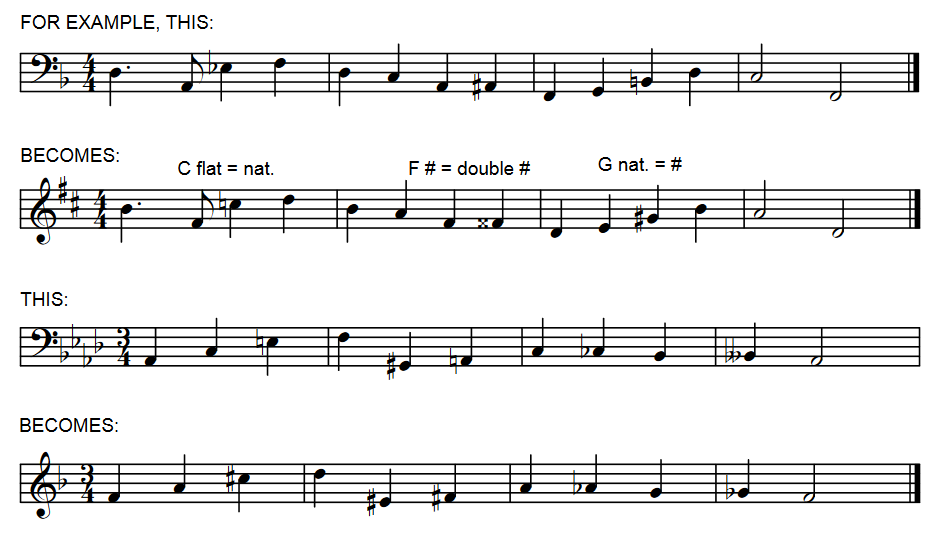Reading Bass Clef parts
for an Eb treble clef instrument
by David Winkler
This is a skill useful for alto saxophone, baritone saxophone, and contrabass clarinet, reading parts originally written for trombone, bassoon, cello, etc.
Change the key signature - add three sharps and read as in treble clef. NOTE: "Add three sharps," can also mean to cancel some flats. For instance, adding three sharps to the key of Bb major (two flats) would result in the key of G major (one sharp).
Read all notes as is. When there are accidentals (sharps, flats, or naturals), read
the accidentals as they are, except as noted below. NOTE: Alto Sax will need to read the notes one octave lower to play the correct pitch. For example, 5th line A in the bass clef should be read as 1st space F in the treble clef.For C, F, and G, do not read the accidental as is - change the accidental so that
the note will be one half step higher, as noted below:
- raise a flat to a natural
- raise a natural to a sharp
- raise a sharp to a double sharp
The easy way to remember this is that F, C, and G are the first three sharps in the sharp key signature series. So when you add three sharps to convert to the Eb transposition, C, F, and G have to be raised an extra half step!

